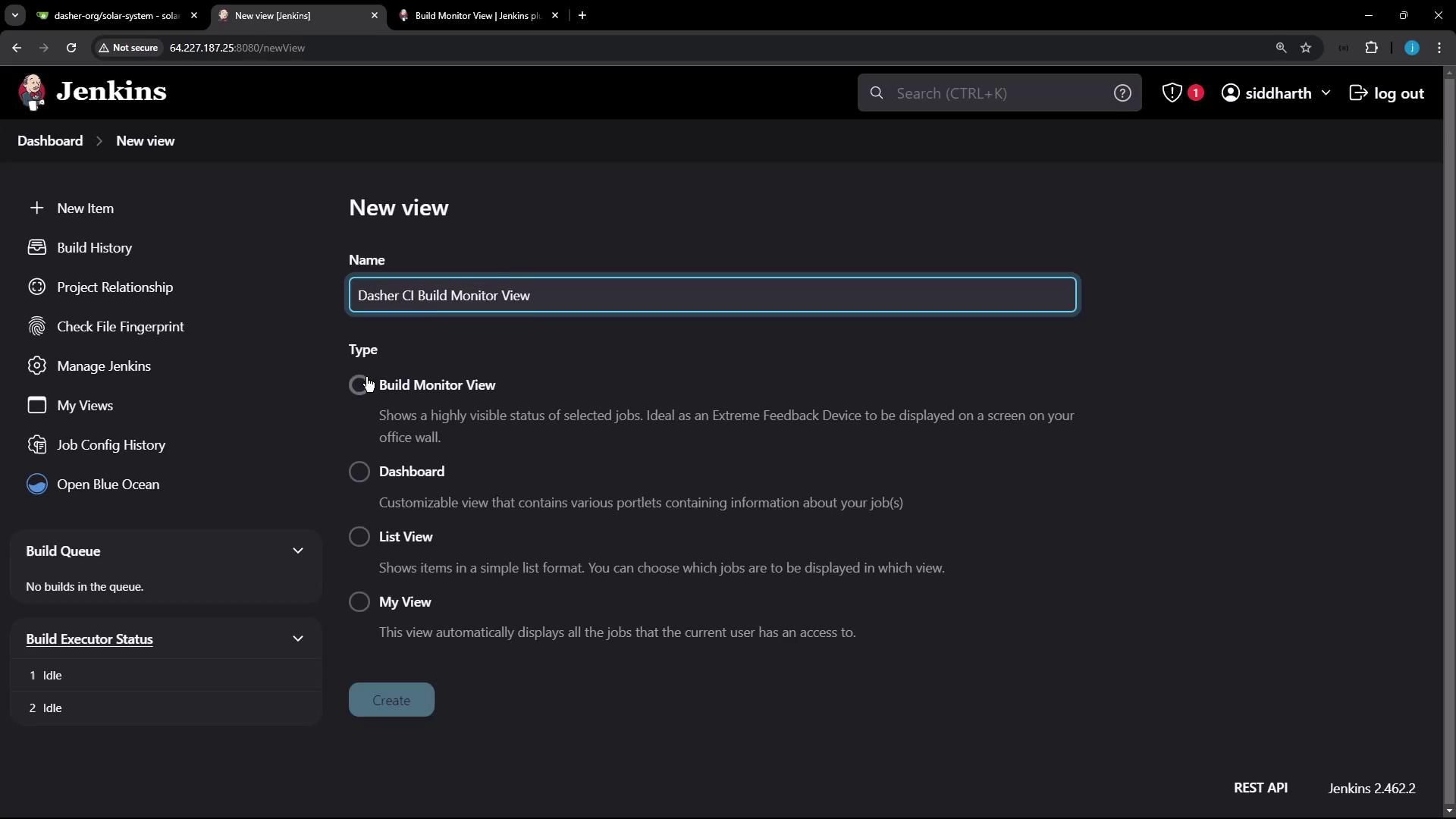Certified Jenkins Engineer
Jenkins Administration and Monitoring Part 1
Demo Build Monitor View
In this tutorial, we’ll configure the Build Monitor View plugin in Jenkins to create a live dashboard that displays the status, progress, and triggering user for each job. This centralized view refreshes automatically, helping teams spot pipeline health at a glance.
Prerequisites
Note
Ensure you have administrative access to your Jenkins controller. Install the Build Monitor View Plugin via Manage Plugins and restart Jenkins if prompted.
1. Creating a Build Monitor View
- From the Jenkins dashboard, click New View.
- Enter a name (e.g., Dasher CI Build Monitor View), select Build Monitor View, and click OK.

- On the configuration page, optionally add a description and set up your job filters:
- Select individual jobs
- Use a regular expression for dynamic inclusion
- Choose all available jobs
- Click Apply and then Save.

2. Configuring Display Options
Once saved, the Build Monitor View presents tiles for each job. You can customize the dashboard using these settings:
| Option | Description |
|---|---|
| Text scale | Adjust the font size of job tiles |
| Number of columns | Define how many columns to display |
| Colorblind mode | Enable high-contrast color palette |
| Reduce motion | Disable CSS animations |
| Show badges | Display build badges (e.g., PR #) |
| Reset to defaults | Restore original settings |
Each tile also shows the current pipeline stage and elapsed time. Status colors:
- Green: Success
- Red: Failure
- Orange: Unstable

3. Adding a Test Pipeline
To observe live updates in your monitor view, create a simple Pipeline job:
- Click New Item, enter
Testing_Build_Monitor_plugin, choose Pipeline, and click OK. - Under Pipeline > Definition, paste the following script:
pipeline {
agent any
stages {
stage('Hello') {
steps {
echo 'Hello World'
}
}
stage('Sleep for 60s') {
steps {
sh 'sleep 60s'
}
}
}
}
- Click Apply and Save.
- Trigger a build via Build Now and watch the console:
Started by user siddharth
[Pipeline] Start of Pipeline
[Pipeline] node
Running on Jenkins in /var/lib/jenkins/workspace/Testing_Build_Monitor_plugin
[Pipeline] stage
[Pipeline] { (Hello)
[Pipeline] echo
Hello World
[Pipeline] }
[Pipeline] stage
[Pipeline] { (Sleep for 60s)
[Pipeline] sh
+ sleep 60s
4. Adding the Job to the Monitor View
If your new Pipeline doesn’t appear automatically, update the view filters:
- Navigate to your Build Monitor View and click Configure.
- In Job Filters, select or add a regex matching
Testing_Build_Monitor_plugin. - Click Apply and Save.

After saving, the dashboard will display the pipeline’s current stage and elapsed time. Upon completion, the tile turns green and shows summary details such as the triggering user, branch, and final build status.
Links and References
Watch Video
Watch video content